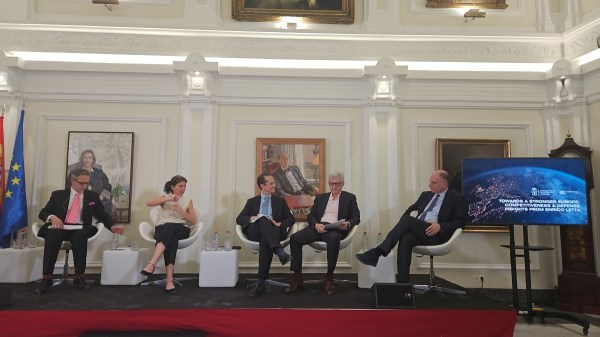New reports published by PwC, “Perspectives from the Global Telecom Outlook 2023-2027“and GSMA “The Mobile Economy Europe 2023“indicate that data traffic will triple in the next five years. In the business-to-consumer (B2C) segment, this increase will be mainly driven by exponential video consumption. In 2018, video accounted for approximately 835,000 petabytes (PB) of data consumption, while by 2027 it is estimated to exceed 7.6 million PB. This would be equivalent to 79% of the total data traffic (9.7 million PB) anticipated for 2027.
In the business-to-business (B2B) segment, the total number of IoT devices installed is estimated to increase from 16.4 billion in 2022 to 25.1 billion in 2027. In addition, IoT cellular licences are expected to double by 2030, from 206 million in 2022 to 501 million in 2030. These increases in IoT are significant as this technology demands high speed and low latency, which in turn requires the digital infrastructure to be as efficient and scalable as possible.
Towards an extension and transformation of the digital infrastructure
Telecommunications companies have been aware of the growing trend in data traffic and the demand for fast and efficient connectivity. Therefore, they have devoted much of their efforts to the deployment of next-generation networks, especially the 5G mobile network.
The 5G network has the capacity to offer 100 times the speed and 1000 times the capacity of legacy networks (2G/3G). It also has up to 7 times less environmental impact than 2G/3G networks. The potential of this network is not only limited to an improved user experience, but also an improvement in economic terms. PwC estimated that the impact of 5G would be roughly equivalent to an increase in global GDP of 1.18 billion euros (US$ 1.3tn), mainly driven by five sectors: healthcare, smart utilities, consumer and media applications, industrial manufacturing, and financial-services applications.
However, over time, it will not be sufficient to simply deploy network infrastructure, as has been the case in the past. In order to effectively address the evolving and expanding demand for connectivity, a reevaluation of the design of telecommunications networks will be necessary. Networks will undergo a transformation towards softwarisation and virtualisation of their functions, thus becoming a “supercomputer”. Thus, instead of offering services in a centralised way, the network will be decentralised towards proximity to end-users and automated through the use of artificial intelligence and machine learning. Ultimately, this will lead to an optimal and personalised connectivity experience.
Cost-effectiveness of investments as the main barrier to future-proof connectivity
This scenario underscores that substantial investments over time will be essential for the telecommunications sector to enhance its capacity to scale up digital infrastructure and foster innovation. As an example, the European Commission estimates that an investment of 174,000 million euros will be required in Europe to achieve the 2030 gigabit connectivity targets, a figure that may rise to 200 billion euros depending on the scenario that is developed. However, the telecoms sector faces a profitability challenge in which high investment intensity will continue to put pressure on telecoms companies’ revenue and debt levels in a high interest rate environment.
PwC, in its report, observed that the rollout of 5G technology is progressing at a faster pace compared to previous generations. This acceleration has resulted in increased investment in network infrastructure (capital expenditures or capex). More specifically, the global telecommunications sector saw a 4.2% rise in capex in 2022.
To achieve the objectives of connectivity for the benefit of society and business, and for the sector to strengthen and grow in the face of this adverse scenario, new formulas are needed to enable investment to take place. The new ERT report, “Connectivity is decisive for Europe’s competitiveness”, proposes a number of recommendations, including: promoting economies of scale through mergers that allow operators to share resources, make investments profitable and spread the burden of investment; introducing measures to foster innovation; and encouraging application and content providers to negotiate with operators to find appropriate and commercially viable solutions that appropriately reflect the costs incurred.












